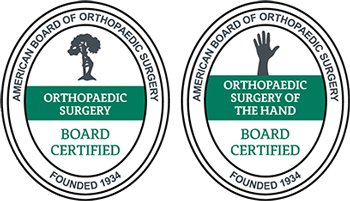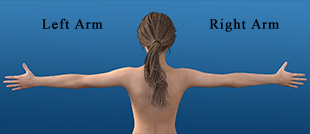Synovial Cyst vs. Ganglion Cyst: What’s the Difference?
Synovial cysts and ganglion cysts are common benign growths that can develop around joints and tendons, causing discomfort and affecting mobility. Despite how common they are, it can be tricky to determine whether you have a synovial or ganglion cyst and what the differences are. Our team at The Hand and Wrist Institute will help you explore the differences between synovial cysts and ganglion cysts, their underlying causes, their symptoms, and the varied treatment approaches.
Contents [show]
Synovial vs. Ganglion Cyst: What’s the Difference?
Synovial cysts and ganglion cysts are lumps caused by a buildup of fluid that develops near joints or tendons. Synovial cysts originate from the synovial membrane, which lines the joints and produces synovial fluid. They’re usually linked to joint degeneration or arthritis. Synovial cysts are generally encased in tissue and are often located around larger joints, such as the knee, hip, shoulder, or spine. They may or may not be connected to a joint’s cavity.
Ganglion cysts usually stem from the lining of a joint capsule or tendon sheath, connecting to a joint’s cavity. Unlike synovial cysts, ganglion cysts are visible lumps that grow closer to the surface of the skin on the hands, wrists, or feet, but they can also occur elsewhere. Ganglion cysts contain a jelly-like substance similar to synovial fluid. Both types of cysts are typically benign and can cause similar symptoms, such as pain or discomfort. Both can be confused for a carpal boss, which presents as a lump that looks very similar.
Symptoms of Synovial Cysts and Ganglion Cysts
Symptoms of synovial cysts and ganglion cysts can vary depending on their size, location, and whether they’re pressing on nearby structures. Common symptoms may include:
- A visible or palpable lump under the skin, often described as spongy or gelatinous.
- Joint stiffness and limited range of motion.
- Pain or discomfort when moving the joint.
- Swelling or enlargement of the affected joint.
- Numbness or tingling if the cyst presses on nerves.
- Stretched or shiny skin with redness or warmth if inflamed.
Treatments
The following treatments for synovial cysts and ganglion cysts may vary based on the size of the cyst, location, severity of symptoms, and individual patient preferences:
- Observation: In cases where the cyst is small, asymptomatic, and not causing any functional impairment, we may opt for a period of observation without immediate intervention. This approach allows us to monitor for any changes in size or symptoms over time.
- Aspiration: Synovial cysts and ganglion cysts can often benefit from aspiration, which involves using a needle to drain the fluid from the cyst. However, cysts may recur after aspiration, particularly with ganglion cysts.
- Steroid injections: We may use steroid injections with aspiration to reduce inflammation and prevent cyst recurrence. The injected steroid medication can help shrink the cyst and alleviate symptoms.
- Surgical removal: If conservative treatments fail to provide relief or if the cyst recurs and causes significant symptoms or functional impairment, we may consider surgical removal, especially in the case of ganglion cysts. The surgical procedure involves excising the cyst along with a portion of the joint capsule or tendon sheath to prevent recurrence.
- Physical therapy: In some cases, we may recommend physical therapy to improve joint function, mobility, and strength, particularly following surgery. Physical therapy can help restore normal movement patterns and reduce the risk of future cyst formation.
- Alternative treatments: Some patients may wish to explore alternative or complementary treatments, such as acupuncture, chiropractic care, or herbal remedies.
The choice of treatment depends on various factors, such as the specific characteristics of the cyst, severity of symptoms, and your overall health and treatment goals. A health care provider may need to perform imaging studies or other diagnostic tests to confirm the diagnosis and determine the most appropriate treatment for you.
How To Avoid Synovial Cysts and Ganglion Cysts
While it’s not possible to prevent synovial cysts and ganglion cysts completely, there are steps you can take to protect your joints from damage and reduce your risk of developing them:
- Maintain a healthy weight: Excess body weight can amplify stress on your joints and increase joint degeneration, which can create an environment for a cyst to grow. Maintain a healthy weight through a balanced diet and regular exercise to reduce strain on your joints.
- Exercise regularly: Regular physical activity can help improve joint flexibility, strength, and stability, reducing the risk of joint injuries and inflammation that can predispose you to a cyst. Include a variety of low-impact exercises, such as swimming, cycling, and yoga, to support your joint health.
- Use protective gear: If you participate in sports or activities with a high risk of joint injuries, wear gloves, supportive footwear, wrist guards, knee pads, or elbow pads to prevent trauma to your joints.
- Take regular breaks: Avoid prolonged periods of repetitive stress or sitting for a long time. Take regular breaks during activities to rest and stretch your joints, and vary your tasks to avoid overloading specific joints or tendons.
- Consider ergonomics: Maintain proper posture and workstation ergonomics to minimize strain on your joints, particularly if you have a sedentary job. Adjust your workstation setup, chair height, and computer monitor position to support your joints.
- Manage any underlying conditions: If you have a medical condition, such as arthritis or joint inflammation, work with your health care provider to manage your symptoms and reduce the risk of complications. Follow your treatment plan, take medications as directed, and attend regular medical check-ups.
While these strategies can help reduce the risk of synovial and ganglion cysts, it’s important to remember that some factors contributing to cyst formation may be beyond your control, such as genetic predisposition or certain medical conditions. If you have concerns about your joint health or risk of cyst formation, consult with a health care professional at our Dallas or Southlake office for personalized guidance and recommendations.
When To Visit a Doctor
If you experience joint pain or swelling or notice a lump on your skin that persists or worsens over time, schedule an appointment with us at The Hand and Wrist Institute to identify and address any underlying issues before they progress and potentially lead to cysts. We can provide an accurate diagnosis and treatment plan to get you on the road to recovery. Contact our Dallas or Southlake office today to schedule an appointment.

























